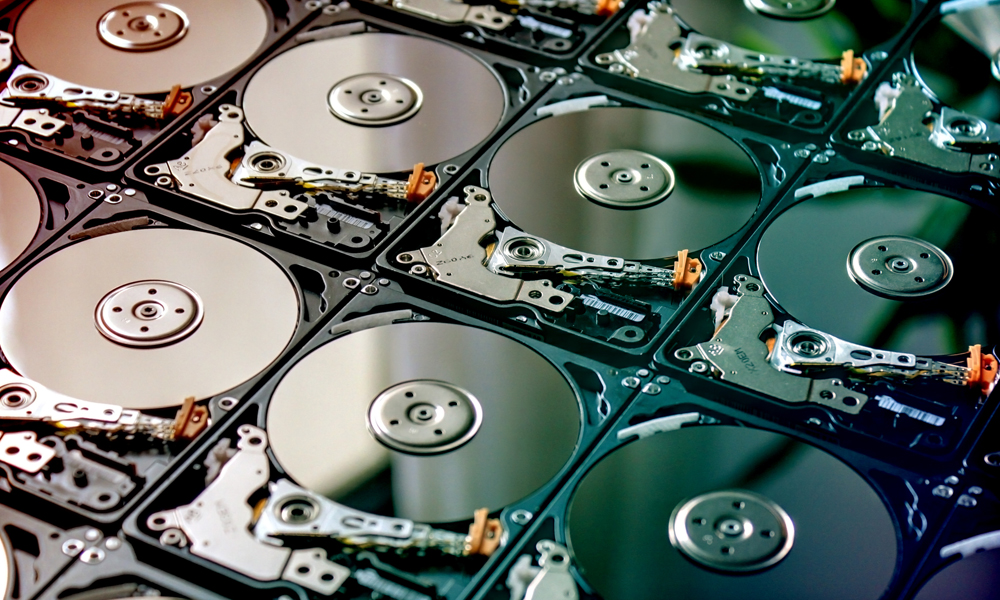
Storage device may hold information, process information or do both. Device that only holds information is called a recording medium. Recording can be done using almost any form of energy – from manual muscle power (as in handwriting) and acoustic vibrations (in phonographic recording) to electromagnetic energy (magnetic tape and optical discs). One of the most common natural occurring storage materials is RNA, carrying biological information for proper cell functioning.
Current storage devices contain different kinds of magnetized media that is generally presented by ferromagnetic materials (e.g. iron or chromium oxides). Ferromagnetic materials have unpaired spins in their structure that are organized in magnetic domains. Numerous bytes (information units) can be recorded on magnetized media as “up” or “down” spin domains (1s and 0s in binary system) and due to unique property of ferromagnetic materials to keep this magnetization data can be then read using the same principle.
There are four core characteristics of storage materials:
- Volatility – defines if a device requires constant power access to maintain the stored information. Volatile memory is faster than non-volatile, however, it’s not suitable for long-term storage;
- Mutability – defines the functions of a device (write, read or both);
- Accessibility – defines how fast a device can access some particular storage location;
- Addressability – defines how data is organized on a device and how it can be accessed.
Other characteristics also include capacity of device, performance and energy use.
References:
- Magnetism: Data Storage https://www.youtube.com/watch?v=f3BNHhfTsvk
- Magnetic Recording: https://www.youtube.com/watch?v=OjA4jSP_Na8
- Magnetic storage: Wikipedia https://en.wikipedia.org/wiki/Magnetic_storage
